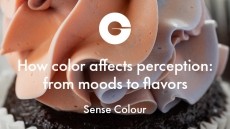EFSA flags high intakes in lycopene safety opinion
within the ADI for most people, concludes EFSA, but its use in
beverages is high and young children may consume more.
Lycopene is a red carotenoid that occurs naturally in certain fruits and vegetables (most notably tomatoes).
Lycopene from tomatoes is permitted as a food colour, but synthetic lycopene and lycopene fermented from Blakeslea trispora have not been given the green light because of questions over ADI (acceptable daily intake) levels.
The new opinion on lycopene, published in The EFSA Journal (2008 674, 1-66), came about because the European Commission to give an opinion on the safety of synthetic lycopene as a food colouring in a number of food categories.
Since it has also been asked to evaluate the safety of lycopene from B trispora as a colour - and lycopene from tomatoes is currently under review as part of a re-evaluation of all food colours - the risk assessor decided to look at lycopene from all sources used as a colouring at the same time.
Its findings will likely have implications for the proposed lycopene sources as food colourings, and have also prompted EFSA to say that the specifications for lycopene from tomatoes may need to be updated so as to take the actual content of lycopene in colouring preparations into account.
The opinion will also be taken into account in on-going assessments by the Panel on dietetic Products, Nutrition and Allergies, which is due to adopt opinions on lycopene oleoresin from tomatoes and synthetic lycopene as novel foods shortly.
The opinion EFSA's AFC panel (Food Additives, Flavourings, Processing Aids and Materials in Contact with Food) said that "use of lycopene as a food colour adds significantly to the overall intake of lycopene", the uses and use levels in the opinion were lower than those permitted for food colours under EU directive 94/36/EC.
This, it said makes that intake of lycopene would be expected to be below the ADI (acceptable daily intake) of 0.5mg per kg of body weight per day.
However the panel found that pre-school and school children were most likely to consume more than the ADI of lycopene as a result of the proposed uses of synthetic and B trispora-derived lycopene.
The ADI for a food colouring is usually calculated using a safety factor of 100.
The 0.5 mg/kg/bw/day ADI fir lycopene was calculated based on a one-year rat study which established a NOAEL, or 'no observed adverse effect level' of 50 mg/kg/bw/day.
EFSA's full opinion can be found at http://www.efsa.europa.eu/EFSA/Scientific_Opinion/afc_ej674_lycopene_op_en.pdf Lycopene and beverages The EFSA assessment looked at lycopene's use as a food colouring in the broad range of food categories for which it is permitted, including beverages, confectionery, sauces, snacks, seafood products, soups and dietary supplements.
Of all, it found that non-alcoholic flavoured drinks were seen to be the largest potential source for all population groups considered, ranging from 66 per cent of ADI for male adults to 90 per cent in pre school children.
Although typical use of tomato-derived lycopene was 5 mg per litre or kg, against a range of 5 to 30 mg per litre or kg, for synthetic lycopene the levels were higher.
The range for synthetic lycopene in carbonates was 7 to 10 mg per litre or kg, with typical use of 8.5 mg per litre or kg; the dilutables range was 3 to 5 mg per litre or kg with typical use of 4 mg per litre or kg; and the juice-based drinks range was 8 to 10 mg per litre or kg with typical use of 10 mg per litre or kg.
For lycopene from B triaspora, meanwhile, the proposed use level is 30 mg/kg.













